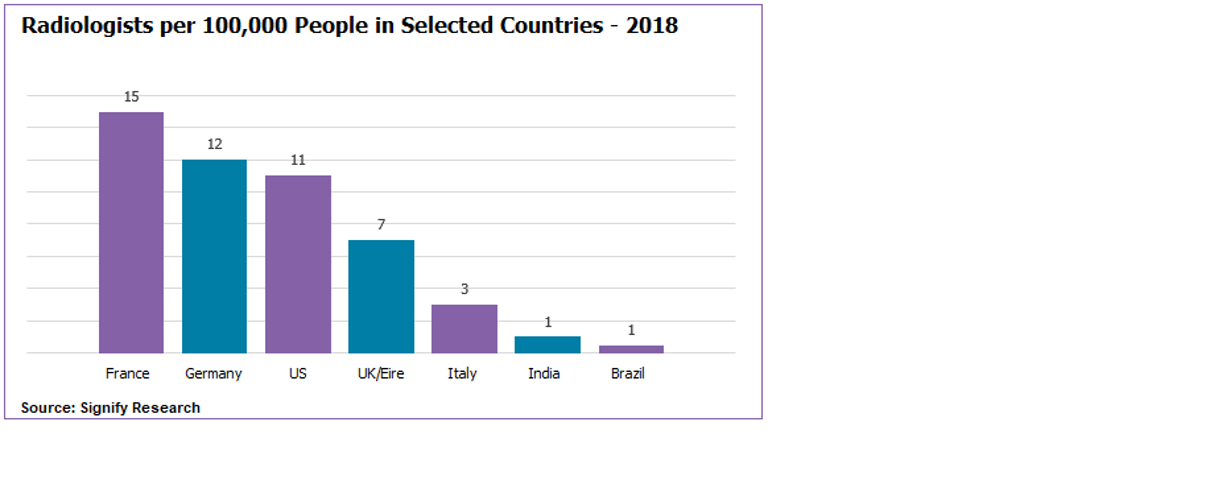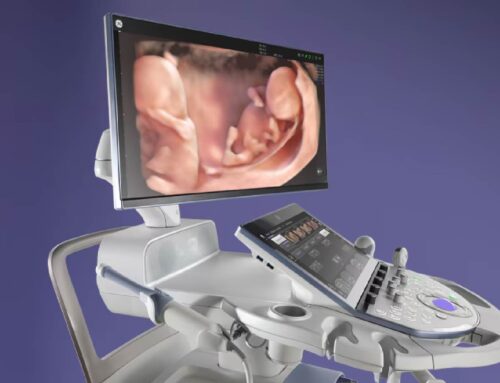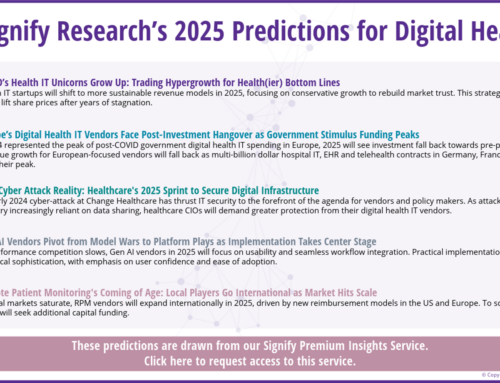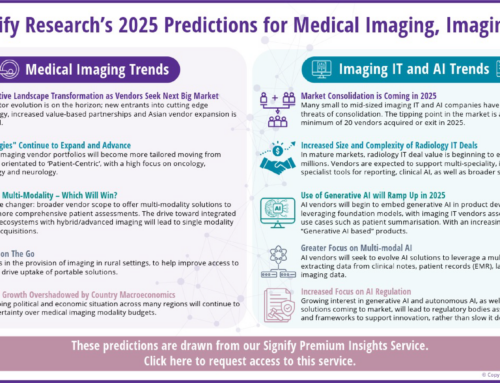2019 was a record year for the global teleradiology reading services market, with revenues rising by 9% to $1.2bn. The market is on course for solid growth over the next five years, tipping the market past $2.0bn in 2024.
Signify Research defines teleradiology as the electronic transmission of radiological patient images from a scanning organisation to a different reading organisation, for the purposes of diagnostic interpretation and reporting.
By 2024, it is estimated that 5.5bn diagnostic imaging examinations will be performed globally (including in house, using radiology groups and using teleradiology reading service providers), of which teleradiology reading will account for 2% of these reads.
Several drivers will contribute to the substantial growth of the teleradiology market (in terms of penetration, revenue and read volumes) over the next five years: These include:
1. Shortage of Radiologists in Certain Countries/Regions
The diagnostic imaging market has suffered from growing pressures on healthcare resources across many countries globally. These shortages are fundamentally due to healthcare services (e.g. the UK’s NHS) lacking the in-house capacity to read the rising quantity of diagnostic images. Within Europe, the UK and Eire has an exceptionally high shortage of radiologists; in 2019 there were an estimated seven radiologists per 100,000 people in the UK and Eire, which is particularly low compared to the European average (13 radiologists per 100,000 people) and the US (11 per 100,000). There were also a relatively low number of radiologists per population in Asia, Africa and Latin America.
Additionally, there is a shortage of radiologists capable of interpreting more specialist and complicated scans, with financial constraints placed on public healthcare service providers limiting their ability to invest in trainee radiologists. The ability to retain and recruit radiologists is proving a significant challenge for the industry.
With the demand for diagnostic imaging growing at a faster rate than the supply of radiologists, radiology groups, imaging centres and hospitals are increasingly becoming reliant on outsourcing their diagnostic reporting workload.
COVID-19 Impact
In addition, hospitals globally are facing an unprecedented constraint on resources due to the impact of COVID-19, which is contributing to a surge in patients requiring diagnostic examinations, such as a chest X-ray or CT. Whilst remote reading of diagnostic images within the hospital network is beyond the scope of Signify’s market report, the knock-on effect of resourcing constraints will result in hospitals increasingly outsourcing their diagnostic reporting workload, outside of the hospital network, to teleradiology reading service providers.
2. Increased Demand for More Specialised Modalities (e.g. CT/MRI)
X-ray was the most popular modality in 2019 and accounted for almost two-thirds of worldwide diagnostic imaging volumes. X-ray demand is forecast to continue to rise steadily through to 2024 although other modalities, including ultrasound, CT and MRI, are on course for significantly higher rates of growth. This is due to the advantages of using specialist modalities, including greater detection and visibility of soft tissues, cancers and tumours. As demand for specialised modalities increases, so does the requirement for specialist radiologists capable of interpreting complicated imaging examinations. Where access to sub-speciality expertise can be limited in-house (e.g. in smaller hospitals), teleradiologist expertise provides a potential solution.
3. Longer Read Times for More Specialised Modalities (e.g. CT v X-ray)
There is a clear relationship between the complexity of a diagnostic examination and the length of read time; the average read time for an X-ray is two minutes, whereas the average read time for CT and MRI is significantly longer (15 minutes and 20 minutes respectively). Whilst X-rays accounted for most of the diagnostic imaging examinations performed in 2019, it is estimated that they accounted for less than 20% of total radiologist reading time, due to faster reading times per scan. The net effect of the changing complexion of scan types forecast over the next five years is, not only are diagnostic procedures increasing, but procedures that take a disproportionately longer time to report are growing fastest, increasing the demand for radiologist resource. With radiology demand (reading hours) rising at a faster pace than the supply of radiologists, the shortfall between supply and demand is set to accelerate.
4. Demand for Out-of-Hours Reporting
The primary driver for out-of-hours reporting is for time-critical applications (e.g. neurology), or if there is suspicion of serious injury; these patients will require fast and accurate diagnosis. Emergency diagnostic examinations will be conducted on-site, however due to the lack of on-site radiologists working out-of-hours, the diagnostic image will be transmitted externally to a teleradiologist for reporting within a short turnaround time (e.g. <1 hour), depending on the urgency. Additional demand for out-of-hours reporting is being driven by the insufficient capacity of radiologists in house (in radiology groups, imaging centres and hospitals) during normal working hours. Out of hours reporting is estimated to have accounted for approximately 45% of the global teleradiology reading service market in 2019. It has been a major historic driver of growth for many reading services companies. For example, UK reading service provider Medica Group has seen out of hours reading services revenues increase from £11M ($16M) in 2015 to more than £22M ($28M) in 2019. Whilst still contributing heavily to overall market growth over the next five years, the share of the market taken by out of hours reporting is projected to fall fractionally as revenues from routine and specialist reporting gain share.
5. Increased Use of Cloud-based Technology
Increased use of cloud-based technology is making implementing IT for teleradiology less complex. The benefit for hospitals and imaging centres in using cloud-based technology is that it bypasses the investment required for static IT architecture. It also removes geographical barriers, providing access to teleradiologists globally who simply require an internet connection and access credentials in order to provide a read/report.
In terms of cloud versus on-premise technology, there is a significant level of variation by vendor and region in terms of the architecture of the products that address teleradiology. However, the remote nature of the market means that more solutions are provisioned via cloud-based technology, compared to the broader imaging IT market.
Technology Advances (e.g. Artificial Intelligence)
As highlighted in Signify Research’s recent market insight – Impact of AI on Teleradiology –, there has been plenty of activity in relation to teleradiology and AI, particularly for improving the three key ingredients of a successful teleradiology service (speed, accuracy and workflow/decision support). Whilst it will be beyond the five-year forecast period of our report before we see AI having a major impact on the teleradiology market, particularly in relation to reading speed and accuracy improvements, teleradiologists will increasingly benefit from solutions for workflow optimisation in the short-medium term.
About Signify Research’s Teleradiology Market Report
Signify Research’s teleradiology market report provides a global analysis of the teleradiology market, both in terms of reading services and the teleradiology IT market. The report includes an analysis of the competitive environment for both reading service providers and teleradiology IT vendors, with more than 35 companies profiled. The analysis of the teleradiology IT market includes estimates and forecasts at a country level for demand for imaging IT and workflow IT used in teleradiology, as well as discussion on the role that AI will play. Please contact us if you are interested in purchasing the report.













